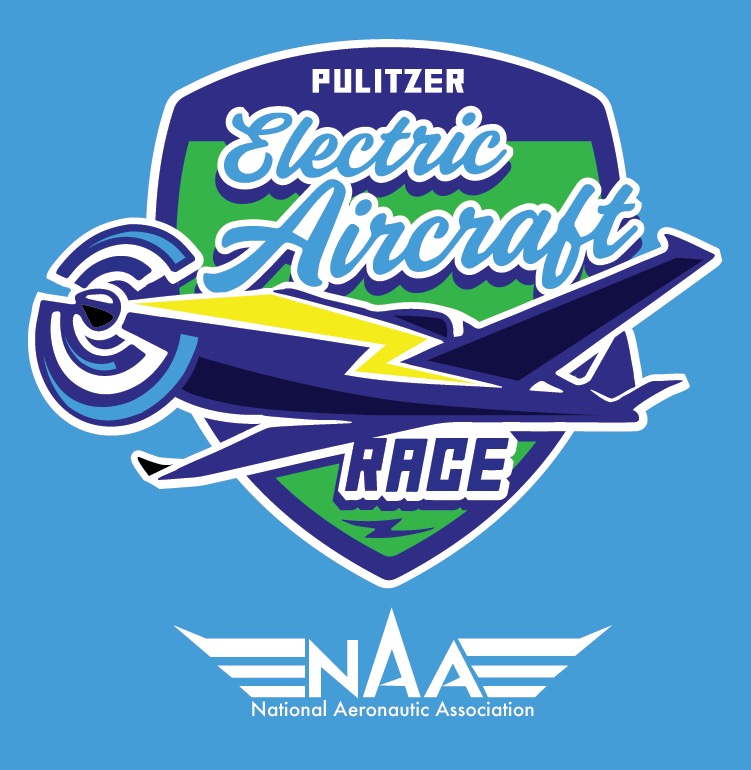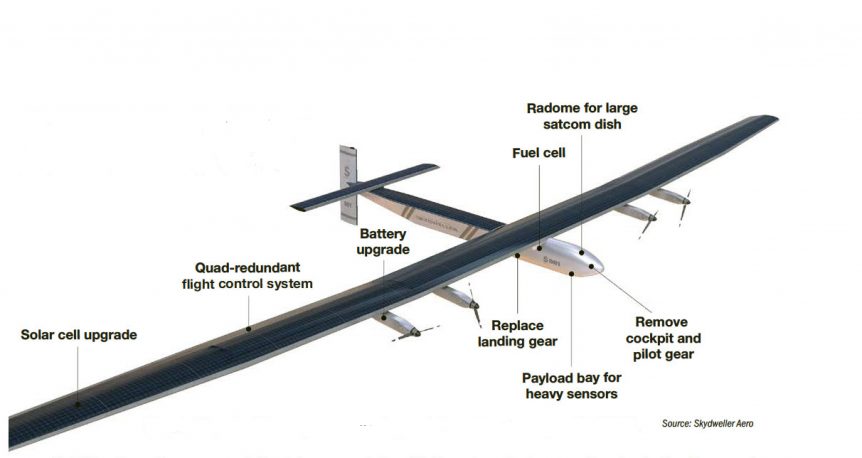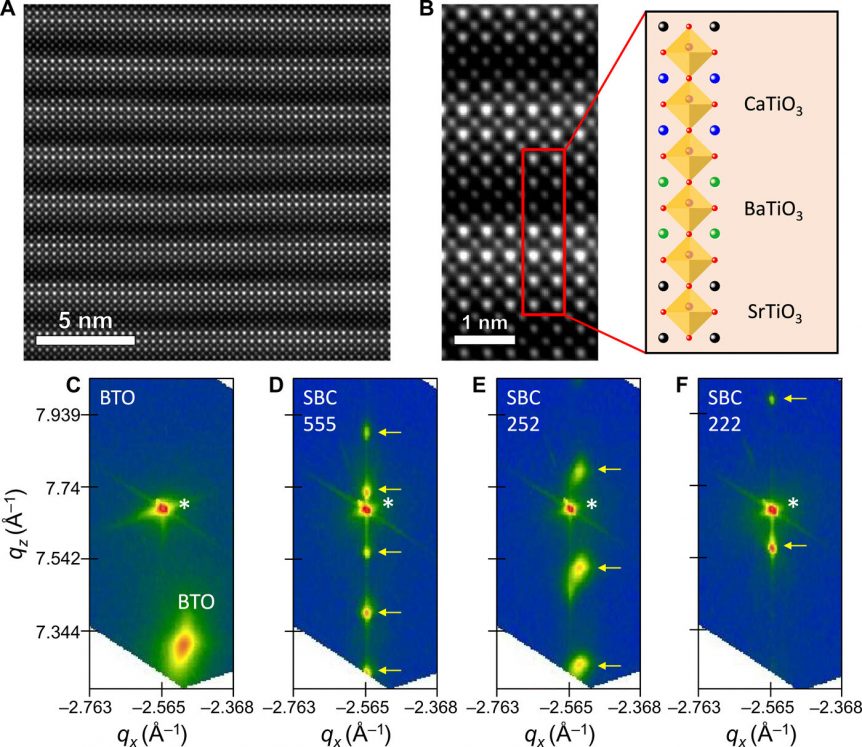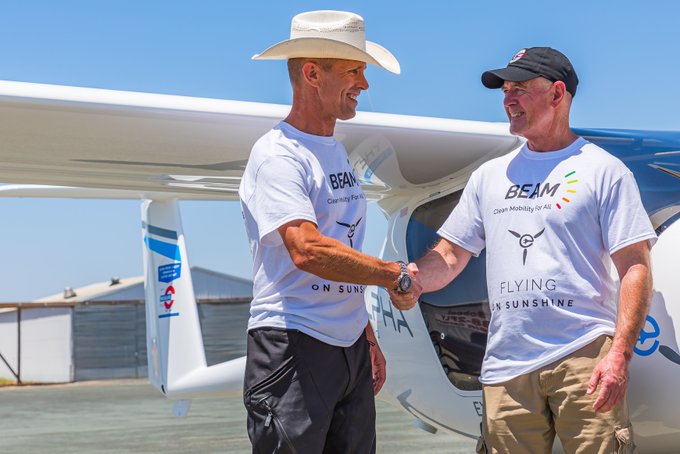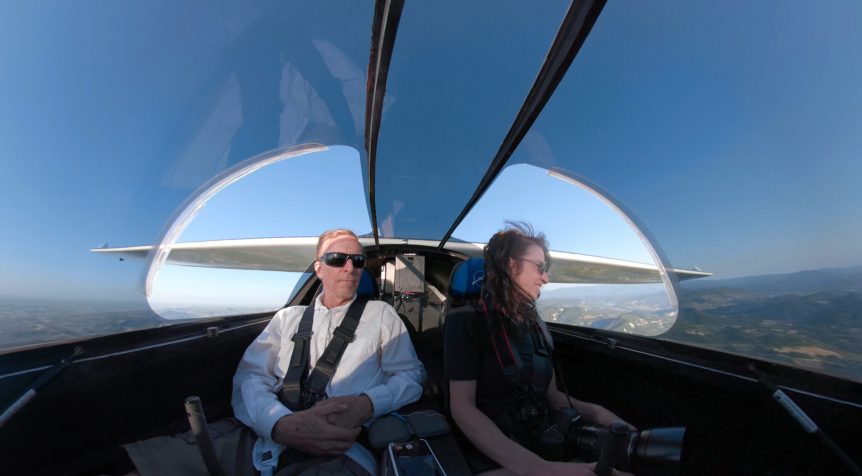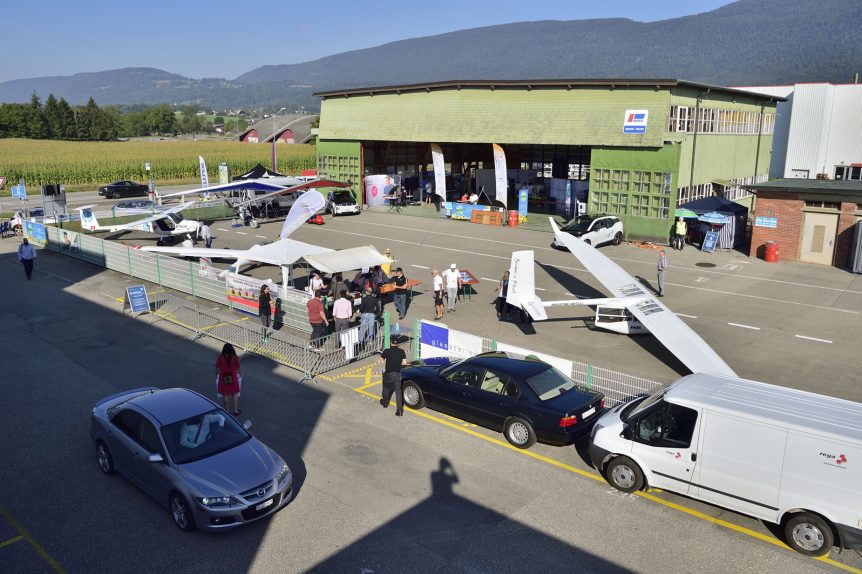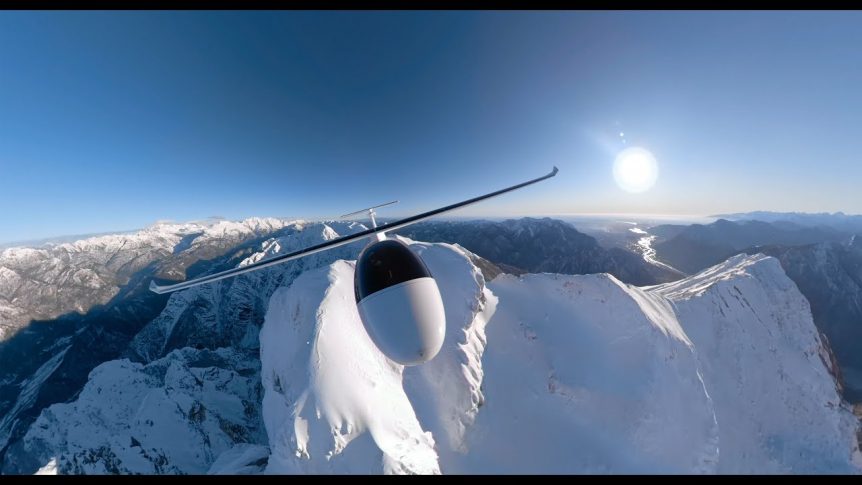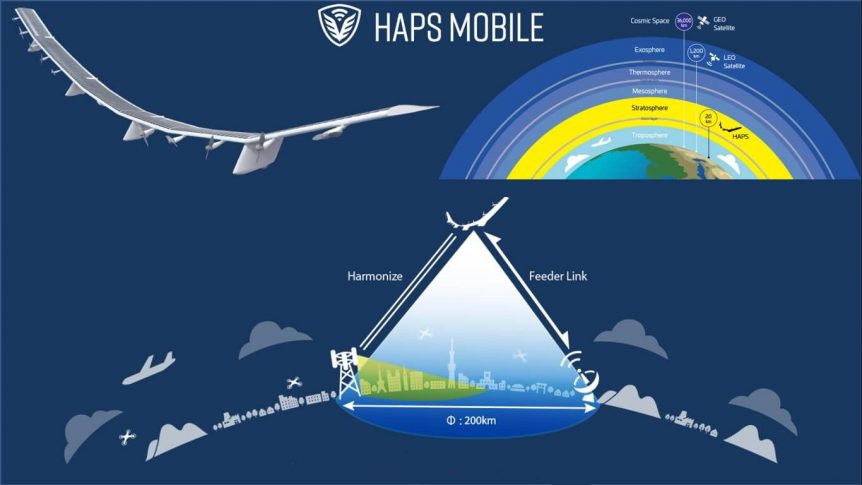Itching to test your electric airplane’s cross-country capabilities? A new Pulitzer Electric Air Race of over 1,000 nautical miles (1,150.78 statute miles to be exact) between Nebraska and North Carolina will show who has the fastest electric flying machine. Jim Moore, reporting for the Aircraft Owners and Pilots Association (AOPA), shows the connection between the original Pulitzer Trophy and today’s electric competition. “Five of the first six pilots to have their names engraved on the Pulitzer Trophy were military airmen clocked around a closed course at speeds starting at 157 mph in 1920, up to a blistering 248 mph by 1925. The trophy was created to inspire innovation, and particularly faster airplanes. That vintage trophy housed at the Smithsonian National Air and Space Museum will be engraved with its first new name in 97 years in 2022, following completion of a 1,000-nautical-mile cross-country race by up to 25 electric aircraft.” Ralph Pulitzer was son of Joseph Pulitzer, whose prizes for …
Skydweller Seeks Ultra-Persistence
Skydweller Aero, an adaptation of Solar Impulse technologies, is working with the U. S. Navy to provide ultra-persistent flight capabilities. It’s using Solar Impulse Two, for which Skydweller purchased the assets and intellectual property rights. Being flown in Spain at this time, the aircraft’s 2,900 square feet of solar cells provide two kilowatts of power, and may be augmented by hydrogen fuel cells in future. In Spain Skydweller founders John Parkes and Robert Miller have headquarters in Oklahoma City, Oklahoma, but are performing flight tests in Spain, coordinating efforts with the University of Castilla-La Mancha (UCLM). After successfully completing ground tests that checked the structure and control systems, Skydweller works toward crafting the software that will guide it on unpiloted missions, scheduled to last at least 30 to 60 days. Such persistence, long sought by the military for ISR (Intelligence, Surveillance and Reconnaissance) missions, is also essential for many future civilian applications. Co-founder John Parkes explained this to Aviation Today. …
The Layered Look in 1000x Solar Cells
We hear a lot about 10X batteries, but 1000X solar cells? Layering up may be stylish and even practical in the fashion world, and in solar cells may be a chance to unite otherwise dissimilar materials with otherwise limited light-to-electric conversion capabilities. That strategy produced solar cells with 1000x that. That’s what researchers at Martin Luther University Halle-Wittenberg (MLU) found when they created crystalline layers of layers of barium titanate (a mixed oxide of barium and titanium), strontium titanate and calcium titanate which they alternately placed on top of one another. Researchers found high increases in responses from the layered oxides because of higher permittivity – electrons able to flow more freely. The team’s paper, “Strongly enhanced and tunable photovoltaic effect in ferroelectric-paraelectric superlattices,” appears in the June 2 issue of the journal Science Advances. A Titanate Sandwich Barium titanate (BaTiO3 or BTO) is a “common ferroelectric material” used to manufacture electronic components such as capacitors. It is, “a popular …
Joseph Oldham Beams an American Record
A new “record” for an electric aircraft flight probably won’t make the books, but was a great sales opportunity for the off-grid charging system that accompanied it. 21 electric airplane records exist in the list of Federation Aeronautique Internationale-recognized achievements. At least one was set in 2012 by Jean-Luc Soullier in his Colomban MC-30 Luciole (Firefly) – 189.87 kilometers per hour (117.98 mph) over a 15 kilometer closed course using a Lynch-type brushed motor. It topped his record in February of the same year of 136.4 kph (84.76 mph). For a while, Soullier held records for altitude and distance, but these were eclipsed by others. At the time, your editor encouraged beating these records, since they were early efforts in a field that should have shown greater progress that it has. Batteries are not that much improved in some respects. Recent flights in Australia, Europe, and America required a mobile infrastructure to charge those batteries. Cars, trucks and airplanes carried …
Sunseeker Duo has a New Radio and Big Plans
Touring on Sunbeams Eric and Irena Raymond have an enviable life, traveling on sunbeams across Europe in their Sunseeker Duo, and if plans go well later this year, into northern Africa and beyond. “Last summer, we flew down the west coast of Italy, landing on the islands of Elba and Corsica.” Crossing the Mediterranean would be no major impediment to further travel, as Solar Impulse showed, because, “Being solar powered our airplanes are assured a constant supply of energy by flying over the clouds, and we can cover much greater distances.” This summer will expand their itinerary to, “Starting in Italy and flying down the Dalmatian coast of Croatia, starting by exploring the Istria peninsula, then touring the myriad countless islands of this Adriatic archipelago. No goal is set, other than returning to our home base in Osoppo (Italy). At least as far as Split should be easy.” Split, on the west coast of Croatia, includes the palace of Roman …
Electrifly-in: Grenchen 2021
Electrifly-in, formerly the Smartflyer Challenge, is on for September 11 and 12, 2021, in Grenchen, Switzerland. The event, even held in 2020 despite the pandemic, is a compact showing of the latest in electrical aircraft and technology. Watch as this 2019 video as a Φnix (the Greek letter phi + nix –a clever bilingual pun) takes off, circuits the area and makes a landing – all the time flying with other electric aircraft. In this flight, you can see the compact airport (including a grass landing strip) and a lovely setting for a great event. Started as the Smartflyer Challenge* in 2016, the gathering has changed its name to be more inclusive. Last year, even with travel limitations imposed worldwide, saw a healthy turnout of all-electric flyers, ranging from ultralight electric “trikes” to cross-country tourers. From 12 to 50 Kilowatts and Beyond Powering a large number of machines on last year’s flight line, Eck-Geiger Engineering makes a range of motors …
Sunseeker Duo Plays Among the Alps
Eric and Irena Raymond took a lovely Sunseeker Duo flight over the Italian alps near their home in Voghera and edited it all into a video. They designed and built their own solar-powered airplane – Eric’s third. He flew Sunseeker 1 across the US in 1990 in 21 hops. A big press conference scheduled for his last landing at Kitty Hawk, NC was a big disappointment since the US invaded Kuwait that day. Six Minutes of Great Beauty Their airplane has solar cells arrayed across the wing and horizontal tail, a small battery pack that gets recharged while flying in the sun, and a 22 kilowatt (30 hp) motor on the tail. Turning off the motor they can soar on winds wafting up the sides of the mountains. Beeping and electronic noises come from an audio variometer, a sensitive indicator of whether the airplane is climbing or descending. All the sounds are ambient. Note how quiet the airplane is, even …
Beam Me Up: Flying on Sunshine™
We recently reported on two electrically-powered cross-country flights for which the big issue was lack of battery-charging facilities at airports along the way. Both “teams” had their chargers carried by an accompanying airplane or automobile. Now, with a public demonstration a Beam Global charger at Reedley Municipal Airport in Fresno County, California, we see a no-fuss way to bring EV charging to aviation – even in remote locations. Beam Global premises its installations on a foursome of negatives: No permitting, no construction, no electrical work, and no utility bill. Installation, if one believes Beam’s video, is almost a non-event. Beam, formerly Envision Solar, produces pre-fabricated EV ARC solar-powered charging stations. Like a vacation camper, the ARCs can be towed right onto a level piece of property and dropped off. The units are self-contained and can produce electricity from the sheltering overhead solar panels. A driver or pilot can park on or next to the metal platform and charge their electric …
What’s the HAPS?
What do a Japanese investment bank, a software network, balloons and a gigantic stratospheric flying wing called HAPS have in common? Let’s look at the players and then piece together this puzzle. Softbank According to Wikipedia, “SoftBank Group Corp.[11][12] is a Japanese multinational conglomerate holding company headquartered in Minato, Tokyo. SoftBank owns stakes in many technology, energy, and financial companies. It also runs Vision Fund, the world’s largest technology-focused venture capital fund, with over $100 billion in capital.[13][14] “The company is known for its leadership by founder Masayoshi Son.[15] It operates in broadband, fixed-line telecommunications, e-commerce, internet, technology services, finance, media and marketing, semiconductor design, and other areas. “SoftBank was ranked in the Forbes Global 2000 list as the 36th largest public company in the world,[16] and the second largest publicly traded company in Japan after Toyota.” SoftBank’s web site promotes the “Information Revolution” as “Happiness for everyone.” The bank explains, “Since our founding, the SoftBank Group has sought to promote the Information Revolution to contribute to the wellbeing of people and society.” The Group …
Black-silicon Cell Efficiency above 130 Percent
Aalto University in Espoo, Finland has announced a seemingly impossible breakthrough – black-silicon solar cells that exceed 100-percent efficiency. This breaks the Shockley-Queisser limit, previously thought to be an unbreakable barrier to any solar cell generating more than 33.7-percent efficiency for a single p-n junction photovoltaic cell. The 1,000 Watts of sunlight falling on a square meter of single-junction solar cells could never produce more than 337 Watts to a battery or other receiving mechanism. William Shockley, a co-winner of the Nobel Prize in Physics for his co-creation of the transistor and Hans-Joachim Queisser defined this limit at Shockley Semiconductor in 1961. In a traditional solid-state semiconductor such as silicon, a solar cell is made from two doped crystals. One is an n-type semiconductor, which has extra free electrons, and the other a p-type semiconductor, which is lacking free electrons, referred to as “holes.” When initially placed in contact with each other, some of the electrons in the n-type portion will flow into the p-type to “fill in” the missing …

